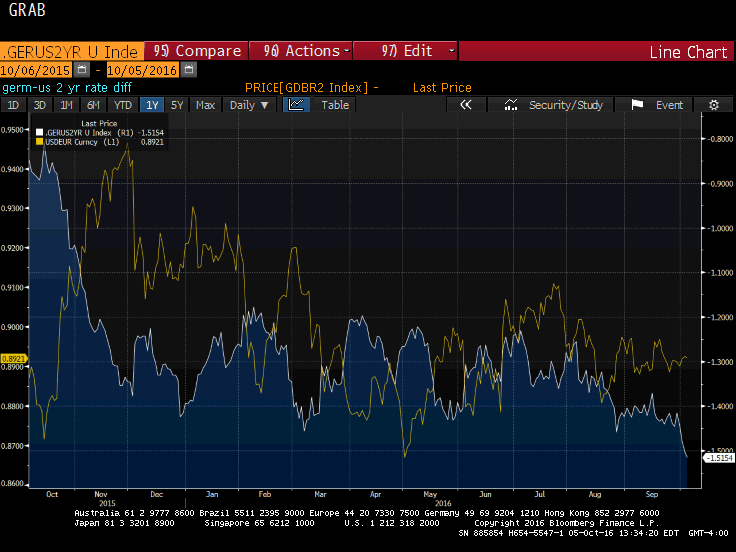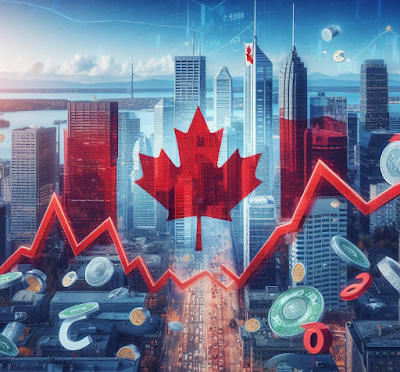Summary:
The US premium over Germany is at its widest since 2006.
This is despite a small reduction in odds of a hike in December.
There are many forces are work, but over time, the widening differential will likely give the dollar better traction.
| This Great Graphic from Bloomberg shows two time series. The white line is the spread between the German two-year interest rate and the US two-year yield. The yellow line is the euro-dollar exchange rate. Two different scales are needed as when the times series are indexed; the relative volatility is such that the details cannot be observed.
The German discount to the US reached 152 bp today, which is a new high extreme since 2006. The pre-crisis peak was actually in 2005 near 185 bp. The chart covers the movement of both time series over the past year. Because of the optical illusion of making one chart with two times series and two scales, it may not be particularly robust analysis, but its cautions against putting too much emphasis on co-movement of the two. Nevertheless, the divergence is striking. Since the end of July, the euro has appreciated from below $1.10 to $1.12-$1.13. The two-year differential has widened to 152 bp from 125. There are many cross current flows and other distortions, like the cross-currency swap rate, which the BIS discussed here. Nevertheless, over time, the widening premium in the US favor will likely give the greenback better traction, though of course there is not a one-to-one correspondence between a particular interest rate level and a euro-dollar exchange rate. |
Germany-United States 2 year index |
After a very strong service sector ISM and better than expected factory/durable goods orders, and a meh of an ADP report, expectations for Fed policy have barely changed. Bloomberg says the odds of Nov hike increased to 23.6% from 21.4%. The CME’s calculation puts the odds at 16.6%, up from 14.5%. The odds of a December move have been pared to 50.2% (from 50.3%) for Bloomberg, while the CME puts it at 54.8% (from 55.1%).
Where we stand? We think there is a de minimis chance of a November hike. There is no precedent for a hike a week before a national election. This is one way how the Fed traditionally demonstrated its political neutrality. It would not change policy so close to an election. It does not mean that the Fed cannot do so, but it suggests that it would need a compelling reason to break from tradition.
Moreover, remember the corner the Fed has painted for itself. It will not change policy without a press conference. There is no press conference after the Nov meeting. A rate hike then does not only require a break from tradition, but it also requires a logistical challenge of having a last minute press conference without word leaking.
On the other hand, we think there is a strong chance of a hike in December and with the current odds, there is scope for investors to discount a greater likelihood. A strong jobs report is helpful, but before the December meeting, Fed officials will have two more reports. This week’s then may not be the trigger for a dramatic shift in expectations, barring a blowout report.
Full story here Are you the author? Previous post See more for Next postTags: #USD,$EUR,Great Graphic,newslettersent






































